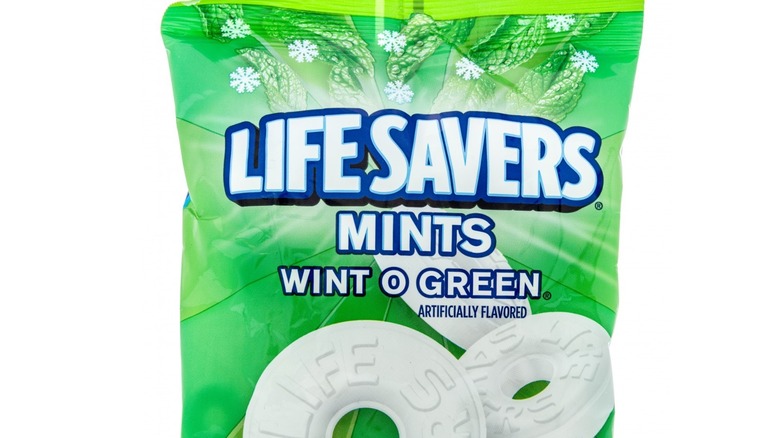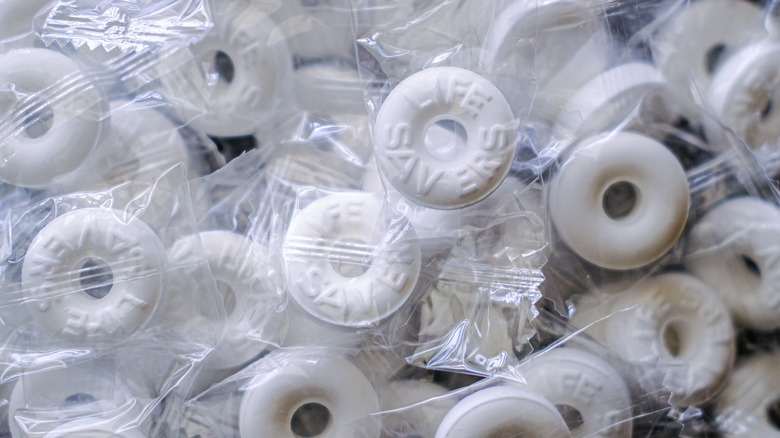Do Wint-O-Green Life Savers Really Spark In The Dark?
Some of the most common foods eaten around the world have magical powers... Well, sort of. Did you know, for example, that ripe cranberries bounce? What about the fact that bananas are radioactive? And who knew that peanut butter can be used to make diamonds?! In addition to their obvious purpose of being consumed, many everyday foods can be used as party tricks or even just riveting topics of conversation. And speaking of fascinating edibles, there is one particular food product that has wowed consumers for ages due to its ability to emit tiny blasts of light when chewed upon.
The product in question is Life Savers candy, specifically the Wint-O-Green variety. In 1919, just a few years after Pep-O-Mint Life Savers filled candy jars in homes across America, the subtly sweet Wint-O-Green confection was introduced to the market, along with other popular flavors such as Cl-O-ve, Lic-O-Rice, Cinn-O-Mon, Vi-O-Let, and Choc-O-Late, according to ThoughtCo. But what, exactly, makes this wintergreen-flavored, ring-shaped treat so much more special than its siblings?
Wintergreen oil is fluorescent
As it turns out, the flavoring in Wint-O-Green Life Savers has a unique chemical characteristic that makes for a super fun sleepover activity. Per ThoughtCo, wintergreen oil (methyl salicylate) is naturally fluorescent, giving it the power to emit visible ultraviolet light. According to Scienceline, the physical act of crunching on candy "shatter[s] its sugar crystals," causing something called triboluminescence — the emission of light when a material undergoes any friction-producing or impactful activity, such as being crushed, scratched, ripped, or bitten. When a sugar crystal breaks, its electrons collide with nitrogen atoms, producing UV light energy. The result? A tiny sparkle spectacle!
A 1979 episode of NPR's "All Things Considered" discussed the science behind the spark after a caller discovered her children playing in the closet multiple times a day. It just so happens that they were crunching on the wintergreen-flavored candies and putting on their own mini light shows. While on air, the show's former co-host Susan Stamberg and then-science correspondent Ira Flatow put the experiment to the test, and much to their surprise, each of them saw bursts of greenish-blue light when the other chewed on the hard candies in the dark. Science is pretty awesome, isn't it?

